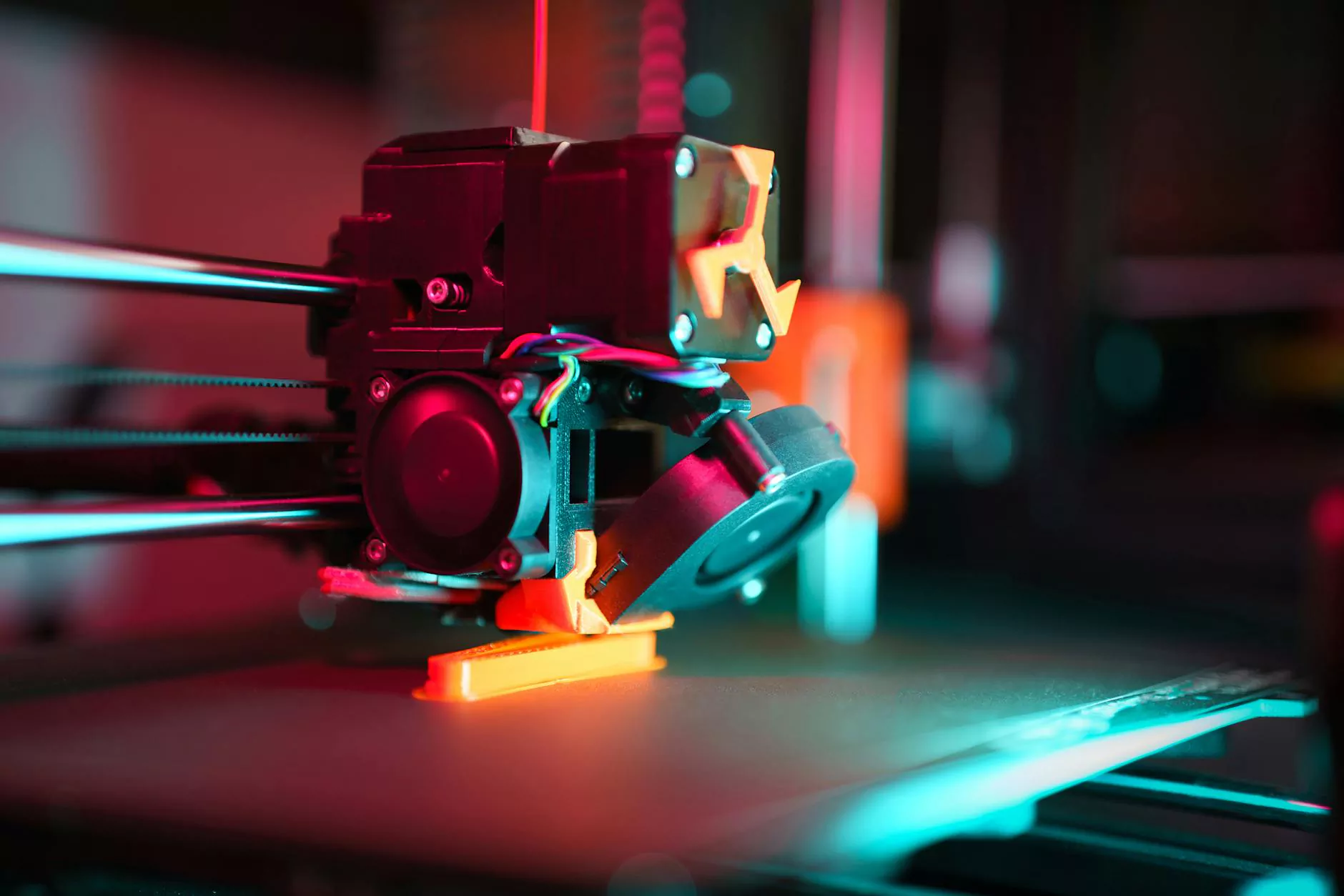The Importance of Prototypical Models in Architectural Design

In the realm of architecture, innovation and precision go hand in hand. One of the most essential tools that architects utilize in their design process is the prototypical model. This article delves deeply into the significance of prototypical models, exploring how they enhance the design process and contribute to successful architectural projects.
What is a Prototypical Model?
A prototypical model is a physical or digital representation of a design that embodies the core characteristics of a specific type of structure or space. Architects use these models to simulate and visualize various architectural elements, allowing for a comprehensive understanding of the design before it is fully realized. These models can vary from simple sketches to intricate 3D representations or even virtual reality simulations.
The Purpose and Benefits of Prototypical Models
Prototypical models serve multiple purposes in the architectural field:
- Visualization: They provide a tangible visualization of concepts, helping architects, clients, and stakeholders understand the design intentions clearly.
- Testing Ideas: Models allow architects to test different design elements, such as light, space, and materials, before committing to construction.
- Refinement: The iterative nature of model making encourages continuous improvement and refinement of designs based on feedback and observations.
- Communication: Prototypical models facilitate better communication among team members and with clients by providing a clear reference point for discussions.
Types of Prototypical Models
There are several types of prototypical models that architects may employ throughout the design process:
1. Physical Models
Physical models are tangible representations made from various materials such as cardboard, wood, or acrylic. These models allow for hands-on exploration of the design and can be incredibly detailed, showcasing textures, colors, and spatial relationships.
Advantages of Physical Models
- Provide a real-world understanding of scale and proportion.
- Encourage collaboration in design discussions.
- Facilitate quick adjustments to design elements during the prototyping stage.
2. Digital Models
Digital models are created using advanced software tools that allow architects to build 3D representations of their designs. Programs like Autodesk Revit, SketchUp, and Rhino are commonly used to create intricate models that can be easily modified and manipulated.
Advantages of Digital Models
- Enable complex visualizations and simulations not possible with physical models.
- Support integration with Building Information Modeling (BIM) for enhanced project management.
- Allow for easy sharing and collaboration across teams and disciplines.
3. Virtual Reality (VR) and Augmented Reality (AR) Models
With the advent of technology, VR and AR have emerged as powerful tools in architectural modeling. These immersive experiences allow stakeholders to "walk through" designs, gaining an unparalleled sense of scale and space before any physical construction begins.
Benefits of VR/AR Models
- Enhance client engagement by providing an interactive experience.
- Allow for immediate feedback and adjustments to the design.
- Facilitate better decision-making by enabling users to visualize the finished space.
The Process of Creating a Prototypical Model
Creating a prototypical model typically involves several stages:
1. Conceptualization
The first step is to conceptualize the design, including determining the purpose, function, and aesthetic of the building. Architects gather initial ideas through sketches, research, and brainstorming sessions.
2. Preliminary Sketches
Initial sketches are produced to visualize the ideas conceptually. These sketches focus on layouts, dimensions, and the overall flow of the space.
3. Model Development
Using the sketches as guidelines, architects will create the prototypical model. This stage can involve building physical models or developing digital ones using software tools. Throughout this stage, architects pay close attention to details and ensure that the model aligns with the original design intent.
4. Testing and Iteration
Once the model is built, it undergoes testing. This could involve evaluating aspects like light, traffic flow, accessibility, and overall functionality. Feedback from peers and stakeholders is gathered to refine the model further.
5. Finalization
In the final stage, the model is polished based on the feedback received, producing a final version that serves as a guide for the construction phase. This final prototypical model should encapsulate all essential elements prior to the actual building process.
Real-World Applications of Prototypical Models
The importance of prototypical models extends across various architectural projects, each showcasing unique applications:
1. Residential Design
In residential design, prototypical models help homeowners visualize their future spaces, allowing for modifications and personalization before construction begins. This aspect ensures that the final home meets the client's expectations and needs.
2. Commercial Spaces
For commercial architecture, prototypical models play a key role in optimizing usability and experience. These models can be used to design office layouts, retail spaces, and public venues, ensuring efficient workflows, accessibility, and impactful customer experiences.
3. Urban Planning
In urban planning, prototypical models contribute to understanding the relationship between various structures and the urban environment. This modeling aids in decisions regarding zoning, public spaces, transportation systems, and community needs.
4. Historical Restorations
When restoring historical buildings, prototypical models help architects and preservationists visualize how to maintain architectural integrity while modernizing facilities. This challenging task requires a careful balance, making the modeling process invaluable.
Challenges and Considerations in Using Prototypical Models
While prototypical models offer incredible benefits, several challenges must be considered:
1. Resource Intensive
Building physical models can be time-consuming and costly, particularly for large projects. Additionally, the need for advanced software and technology for digital modeling can also add to expenses.
2. Technical Skills Requirement
Creating sophisticated digital and VR/AR models requires specialized knowledge and skills, which may necessitate further training or hiring of specialized personnel. Missteps in this area can lead to misrepresentations of the design.
3. Balancing Precision with Flexibility
While accuracy is crucial, prototypical models should allow for flexibility and creative input throughout the design process. Strict adherence to the initial model can stifle creativity and adaptation to client feedback.
The Future of Prototypical Models in Architecture
The future of prototypical models looks promising as technology continues to evolve. As virtual reality, augmented reality, and artificial intelligence become increasingly integrated into architectural practice, models will become even more interactive and immersive. The ability to quickly generate and alter designs in real-time can lead to more innovative and user-centered architectural solutions.
Emerging Trends
- Sustainability: Models will increasingly incorporate sustainable practices, allowing architects to visualize and simulate energy efficiency and environmental impact.
- Collaborative Platforms: Advances in cloud technology will facilitate real-time collaboration among architects, engineers, and clients, streamlining the prototyping process.
- Smart Technologies: Integrating smart technologies into models will enable architects to predict how spaces will function, enhancing the design to cater to future technologies.
Conclusion
Prototypical models are vital tools in the architectural design process. They not only enhance visualization and testing but also facilitate communication and understanding among stakeholders. As architecture continues to evolve in response to technological advancements and societal needs, the significance of prototypical models will only grow, paving the way for innovative, efficient, and aesthetically pleasing designs.
For architects looking to create stunning, functional, and meaningful spaces, investing in the development and refinement of prototypical models is an essential step toward achieving their vision. The architectural landscape is ever-changing, and embracing these modeling techniques will ensure that professionals remain at the forefront of their field.









